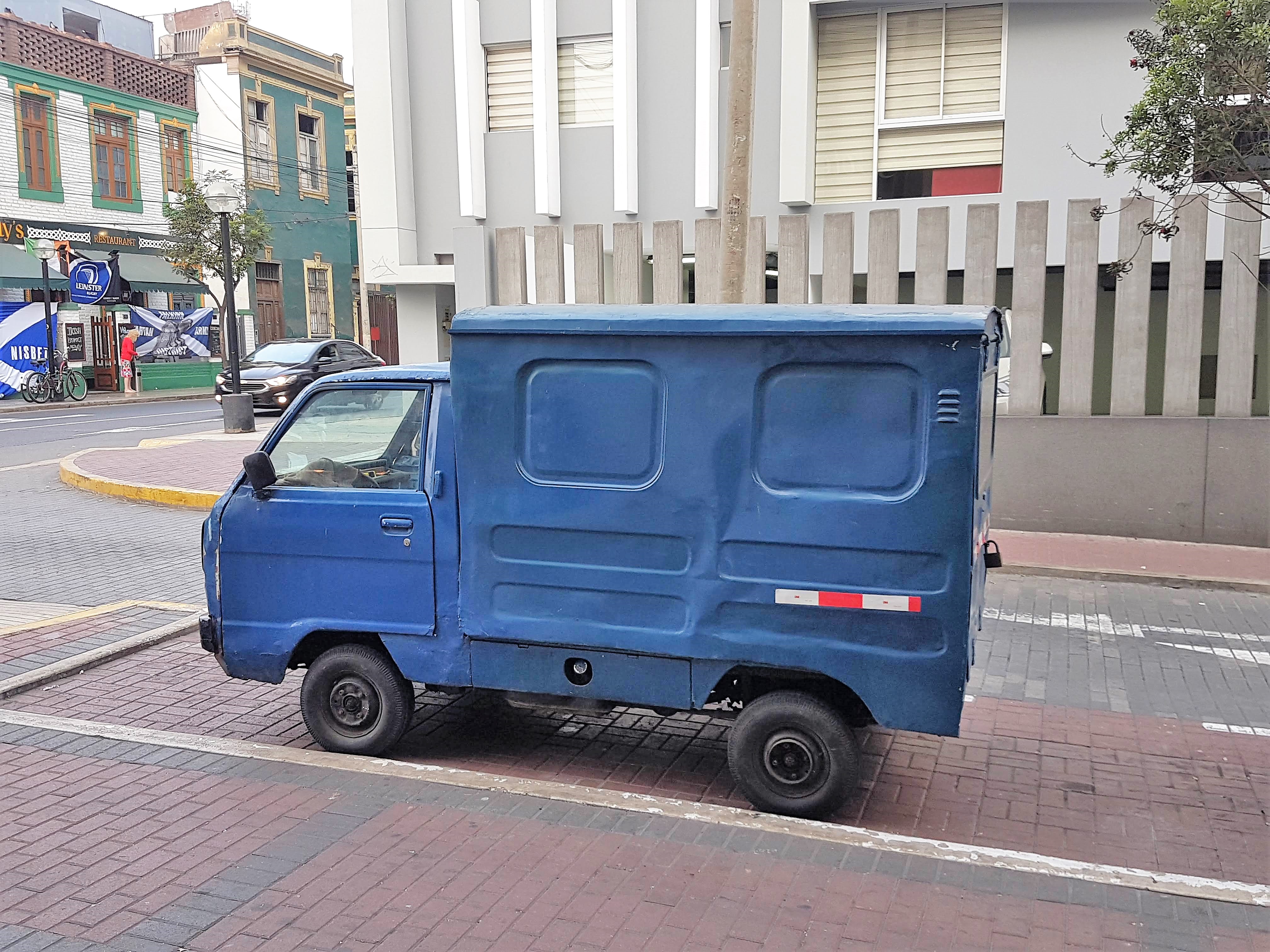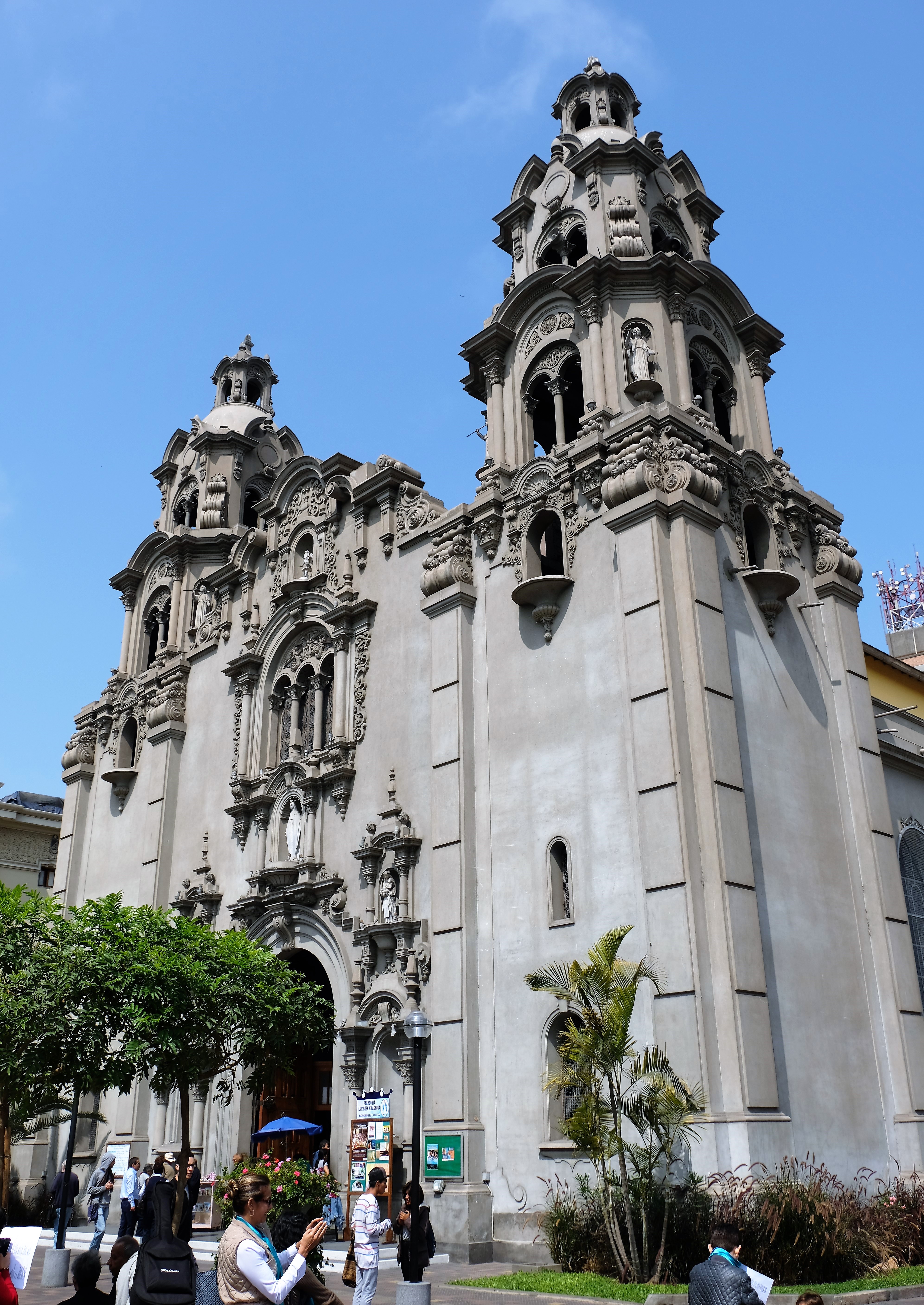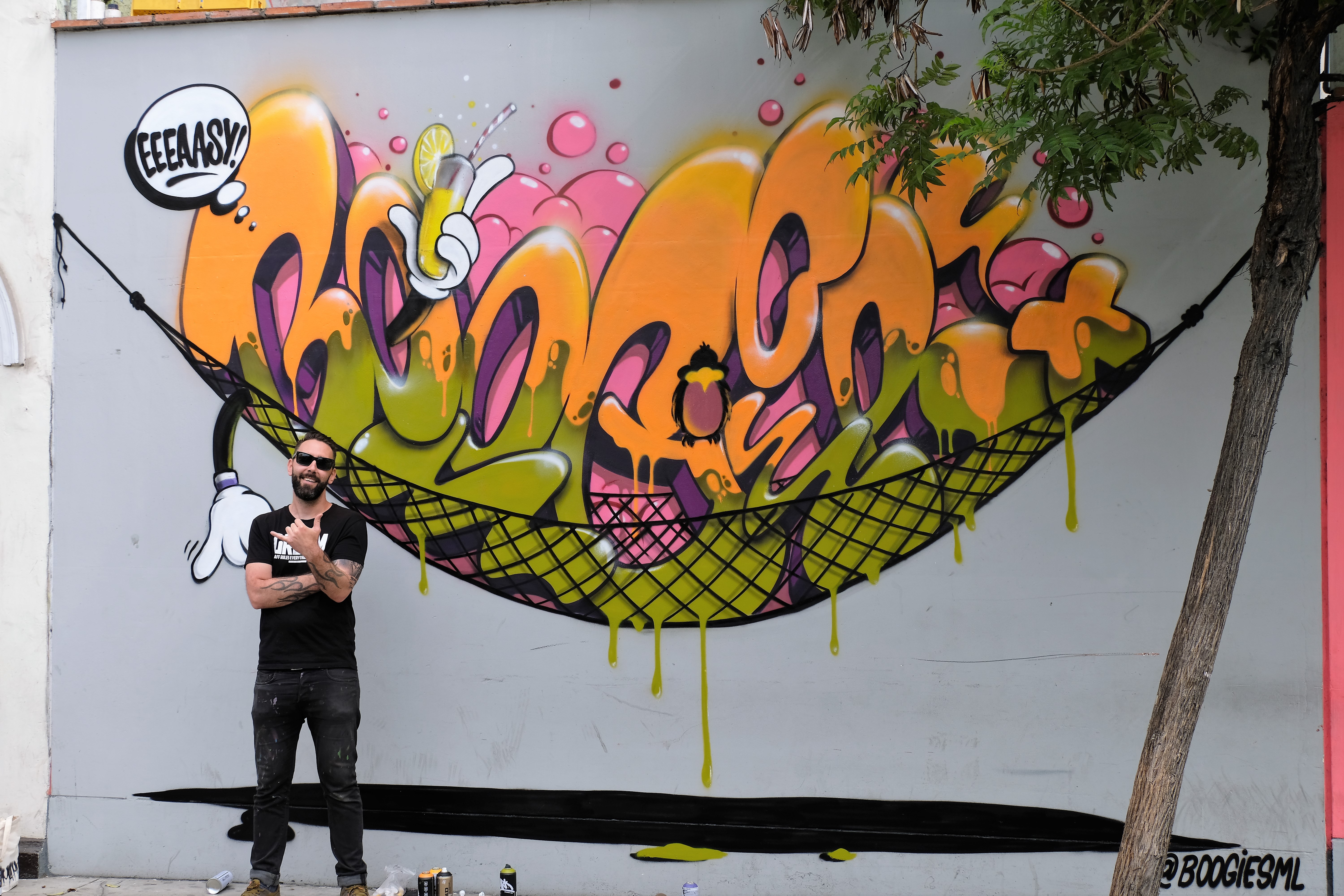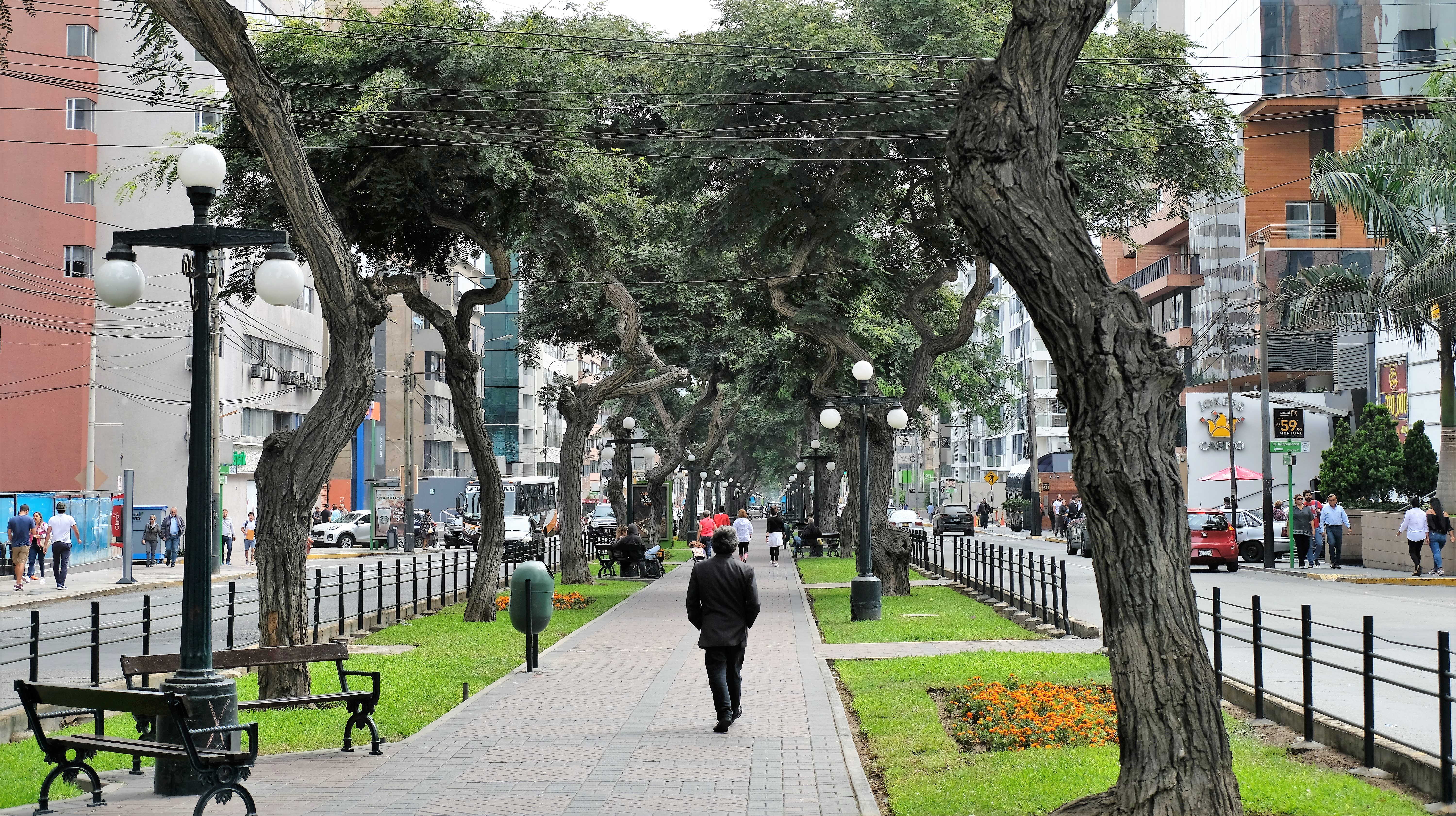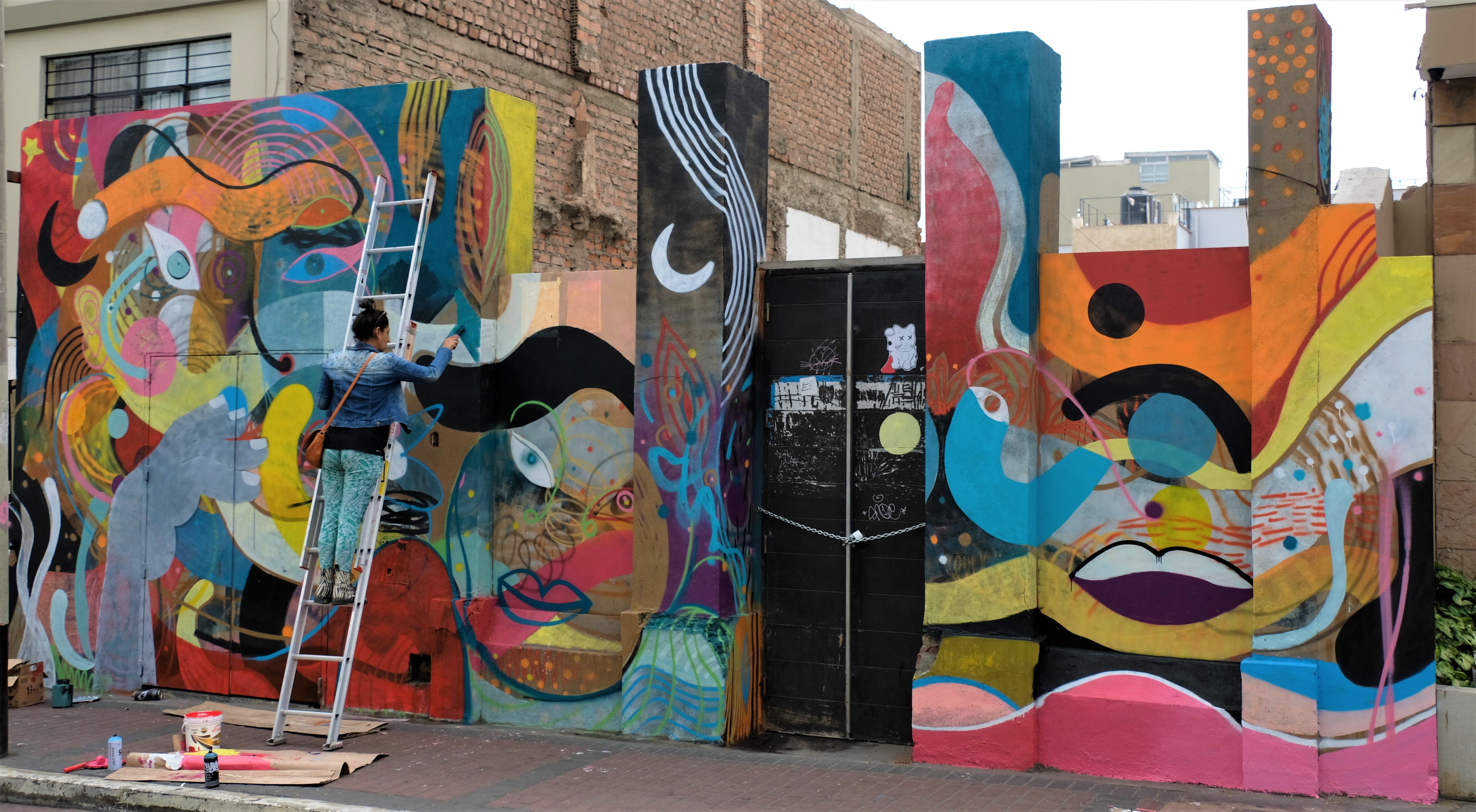Before getting started on Lima, Miraflores and my visit to Huaca Pucllana I need to jump back a little. Peru and Bolivia were without doubt the highlight of this part of my trip, a whole 2 months! For the purpose of being as succinct as possible (not my strong point), I’ll summaries my journey to Lima. I ended my last post (Sydney, Manly and surroundings) explaining why I’d write about New Zealand further down the line. This was made possible by changing my round the world ticket. Had I known it was so easy to do so I would have many times before. How good would it have been to stay longer in Vietnam, Indonesia and Thailand? I could have included Laos and Cambodia…no use crying over spilt milk or what could have been. With three simple emails Star Alliance change 4 of my flights with no charge. Later, on two separate occasions I’d change two more flights, again easy peasy – no charge again!
Getting to Lima
Back to my journey. From Auckland I flew to Houston, from there I flew to Lima, Peru. I had to stay in Houston for one night because I changed my flights, that wasn’t in the original booking. Being in Houston for 24 hours didn’t give me any time to site-see. My body-clock was in disarray because of the flight and time differences. It’s a 13h45m flight; I left Auckland at 19:30, arriving in Houston on the same day at 16:10 – that’s a sure way to confuse the body and mind! All this is my way of saying I wasn’t in the mood for walking about Houston. I slept, ate, slept, had breakfast then headed back to the airport for the 6,5 hour flight to Lima.
Instead of my usual planning I arrived in Lima at 23:00. I say that because I prefer to arrive at a new location/country during the day. That way you get more bang for your buck and it’s safer. This all came about as a result of me changing my flights. Whereas I would normally use public transport to get to my accommodation, on this occasion I made arrangements with my hotel for a taxi. It was cheap and worth taking the effort way when half asleep and late at night. Before I left New Zealand I did my research on locations in Lima; Miraflores seemed perfect so I book three nights at Miraflores Suites Centro. You would think the name of the hotel would mean it’s in Miraflores, no!? Well, it is but just, on the very edge of Miraflores away from everything!
Frankly my location put a dampener on my arrival in Peru, leaving me in a regretful state. The hotel (I use that word very loosely) were nice and friendly, but the location was nowhere, the room was dreary at best. Honestly the location sucked. If you don’t like something, change it, and that’s exactly what I did. Thankfully I need to catch up on writing, and spent the next day looking to move. I had booked for three nights…I left after two. They say a change is like a holiday. In my case a change kick-started Peru and brought back the excitement to my travels. I was now in Miraflores, central…the real Miraflores! ?


Miraflores
Arriving at my new hotel Hotel Las Palmas immediately put all my concerns to rest. Woohoo I was now in the Miraflores, the real Miraflores! My “new” Miraflores was vibrant, shops and restaurants around every corner with a real buzz of activity everywhere. Whereas the only restaurant at my other accommodation was a takeaway pizza restaurant, with nothing else to see except a busy main road. Enough moaning. It goes without saying I was super happy with the new location!
Miraflores is the cool part of Lima, about 10km from the historical centre of the city. Less than 100m from my hotel was John F. Kennedy Park (sometime referred to as just Kennedy Park), the epicentre of Miraflores. I’m only going to touch on the bits and bobs of the area for now, adding more in another post. Oh yes, I forgot to mention, Lima will be a three-part blog. Previously I’ve mentioned (only once or a dozen times ?) that I like street art/graffiti, here in Miraflores there was plenty of it, good quality too. What the laws are regarding graffiti I have no idea; by that I mean I saw three people working on murals out in the open in broad daylight! Eventually I approached on of them, André; a graffiti artist from Germany who goes by the name of Boogie. Didn’t chat long, just complimented him on his work and the usual quick chit chat.
More importantly my new accommodation was very close to two historical sites, both primarily pre-Inca Empire. I was in Peru to see Inca ruins so being close to them made me excited. Without beating around the bush, my only regret in Lima was I didn’t get to see the ruins of Pachacamac; wasted time in my first accommodation. Even so, I saw so much in Peru I have absolutely no regrets. Resuming what I was getting to, I’ll add more about Miraflores in Lima Part 3.
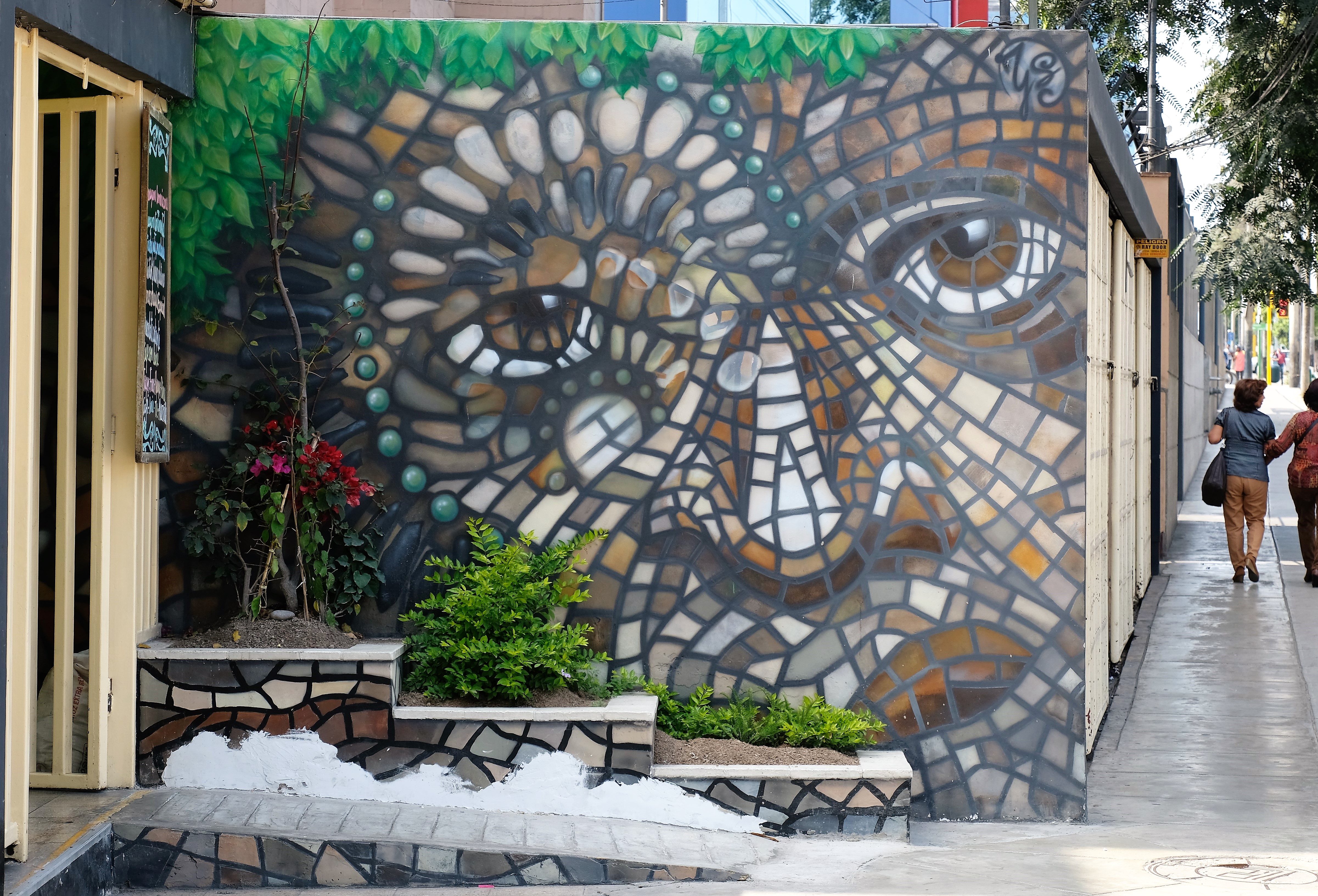


Huaca Pucllana / Huaca Juliana
Getting there was easy, a nice 1.5km walk giving me time to see the local neighbourhood away from the tourist hotspot of Miraflores. Before the Incas became the largest pre-Hispanic Empire in South America, the area was populated by many already established cultures. One of these was the Lima Culture, which can be described as Quechuan. Quechua or Runasimi (which means “people’s language”) is a rather broad terms used for indigenous languages in the Peruvian Andes region. It’s part of the family of indigenous South American languages, spoken by the most people; between 8-10 million people speak a Quechuan language – about 25% of Peru. Luckily the languages survived and still used in South America today (especially Peru), disputed the Spanish Conquistadors best efforts to banish it.
Back to the Lima Culture and Huaca Pucllana. To understand the lack of information about the Lima culture you need to look at remnants of the archaeological sites…lack of. Of those that can be seen today, they are nestled into the city at random between residential areas and the city at large. For a culture that thrived for circa. 600 years (100 to 700 AD) there is little left to see and therefore learn about. Most of the Lima culture has been build over by the present sprawling “new” city of Lima. That which does remain shows tantalising similarities to later Mayan and Aztec cultures ranging for religious to architectural.
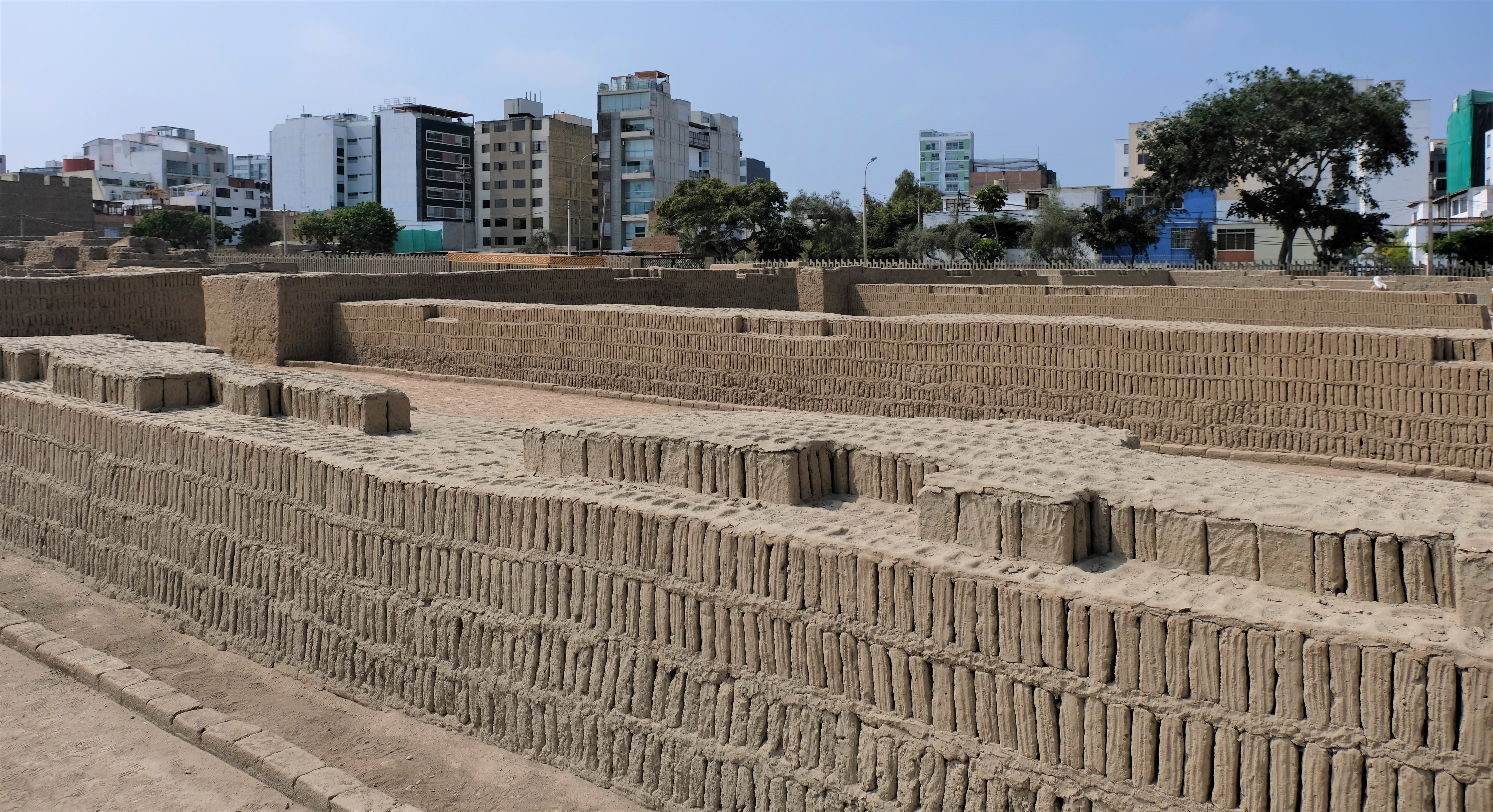

Locals call the temple Wak’a Pucllana; in Quechaun “wak’a means temple. I’ll cover more about the Lima Culture in following post, particularly about my visit to Huaca Huallamarca; another pyramidal temple. Returning to Huaca Pucllana, it’s a complicated archaeological site reminiscent to a game of jenga. What compounds to the state of the site, is its varied use/purpose by different cultures and particularly neglect in more recent years. Into the 1980’s, the site was used as a rubbish dump, parts had been destroyed to build houses and the local kids used it as a BMX track.
The group (mandatory) tour I took seriously aided my understanding of the site; if it weren’t for that I would be lost! The site is built of adobes; sun-baked bricks made of clay, straw and small gritty stones/pebbles. Laid like a bookshelf; vertically with gaps between each adobe. These spaces are not for aesthetics, they help the structure be seismic resilient (ingenious!). Between each layer of bricks is a layer of clay to make the surface flat for the next row of adobes and glues the layers together. In short, it looks like a massive bookshelf of light-brown books and wood.
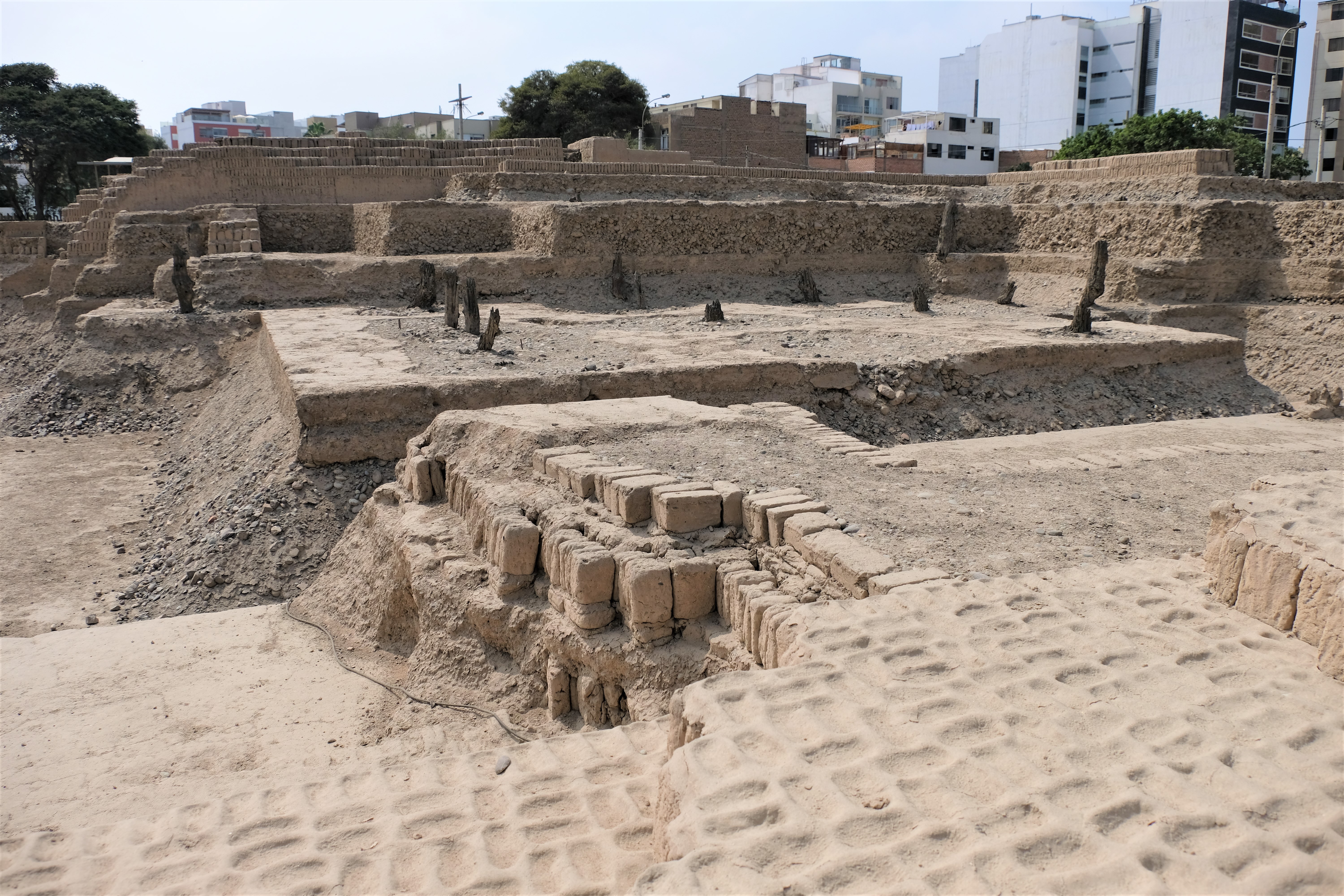
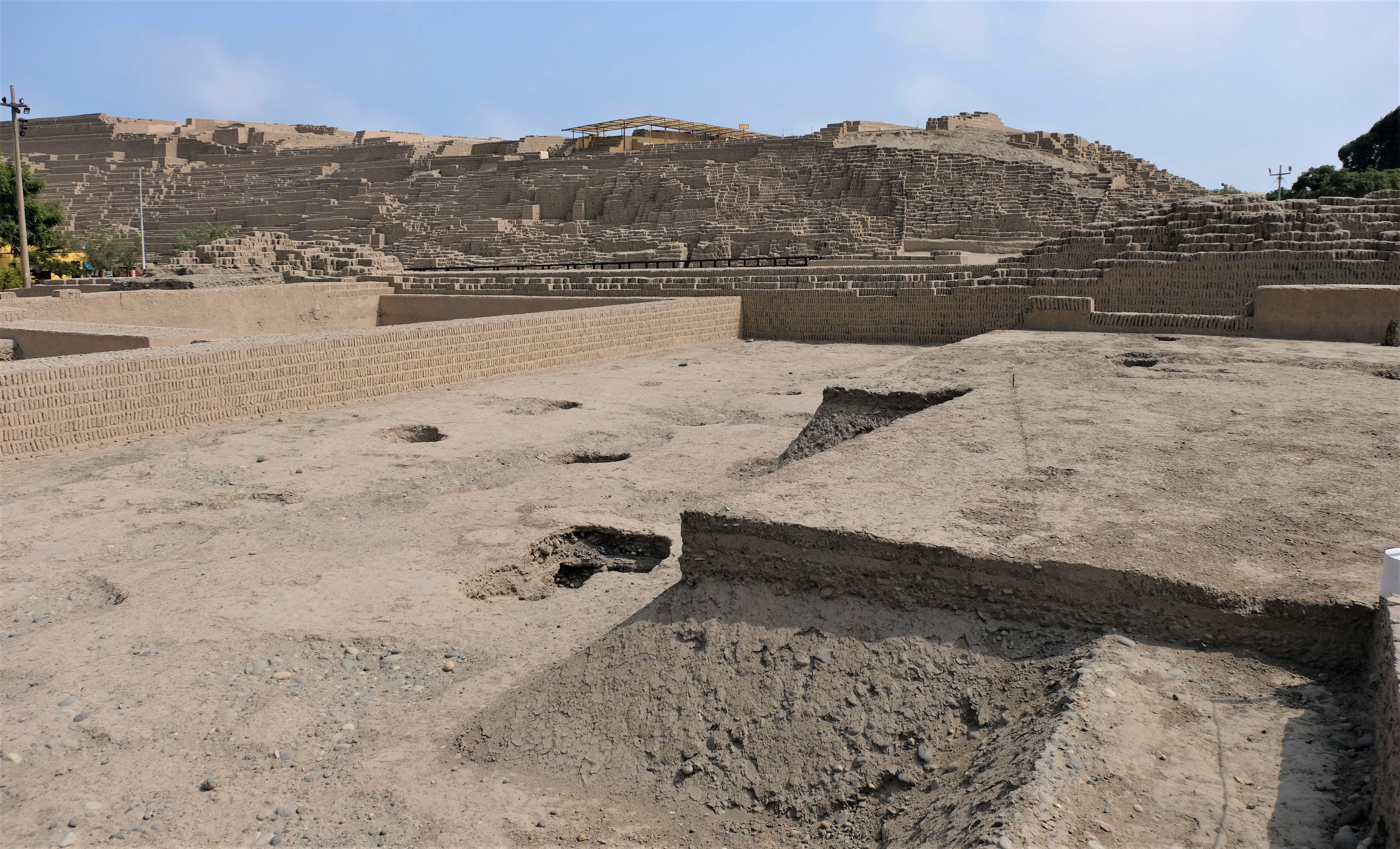
Timeline, layout and uses of Huaca Pucllana
To understand why Huaca Pucllana was built and its uses over hundreds of years I’ll try put a timeline together. How accurate this is up for questioning considering the limited information. If anyone does read this and disagrees please feel free to let me know.
- Ceremonial and Administrative center for the Lima culture between 200 – 700AD
- Huaca Pucllanaas seen today has three main parts:
- Temple / wak’a; the biggest part of the site and a huge rectangular flat top pyramid
- Plaza; a large flat rectangular section at the front base of the wak’a
- Adjoined structures; thought likely to the administrative buildings for the temple and community
- Huaca Pucllanawas enlarged over the years. There are seven distinct layers/platforms, getting smaller as you go higher. It seems at their respective times the top layer was always rather flat. The first (bottom) layer has just about vanished (destructed) for the reasons I mentioned previously). It reminded me somewhat of the mastabas in Saqqara and Dahshur
- Included in the second layer is the large plaza, a few porches/patios with roofs, post holes, altars and hundreds of little holes; used as repositories for offerings (probably)
- For the third, fourth, fifth and sixth level it repeats much of the second.
- The sixth level is currently under excavation. It has extensive damage caused by the Wari tombs
- Around 700 AD the Huaca Pucllanalost its purpose/use
- Sometime between 500-700AD the Wari Culture became prominent in the region.
- By 800 AD, the Wari social elite were using Huaca Pucllana as a cemetery
- After the decline of the Wari people, many of the local groups united. Collectively referred to as the Ychsma; their capital was Pachacamac. This left Huaca Pucllana quite deserted, except for a few local people who tentatively kept up some of its traditions

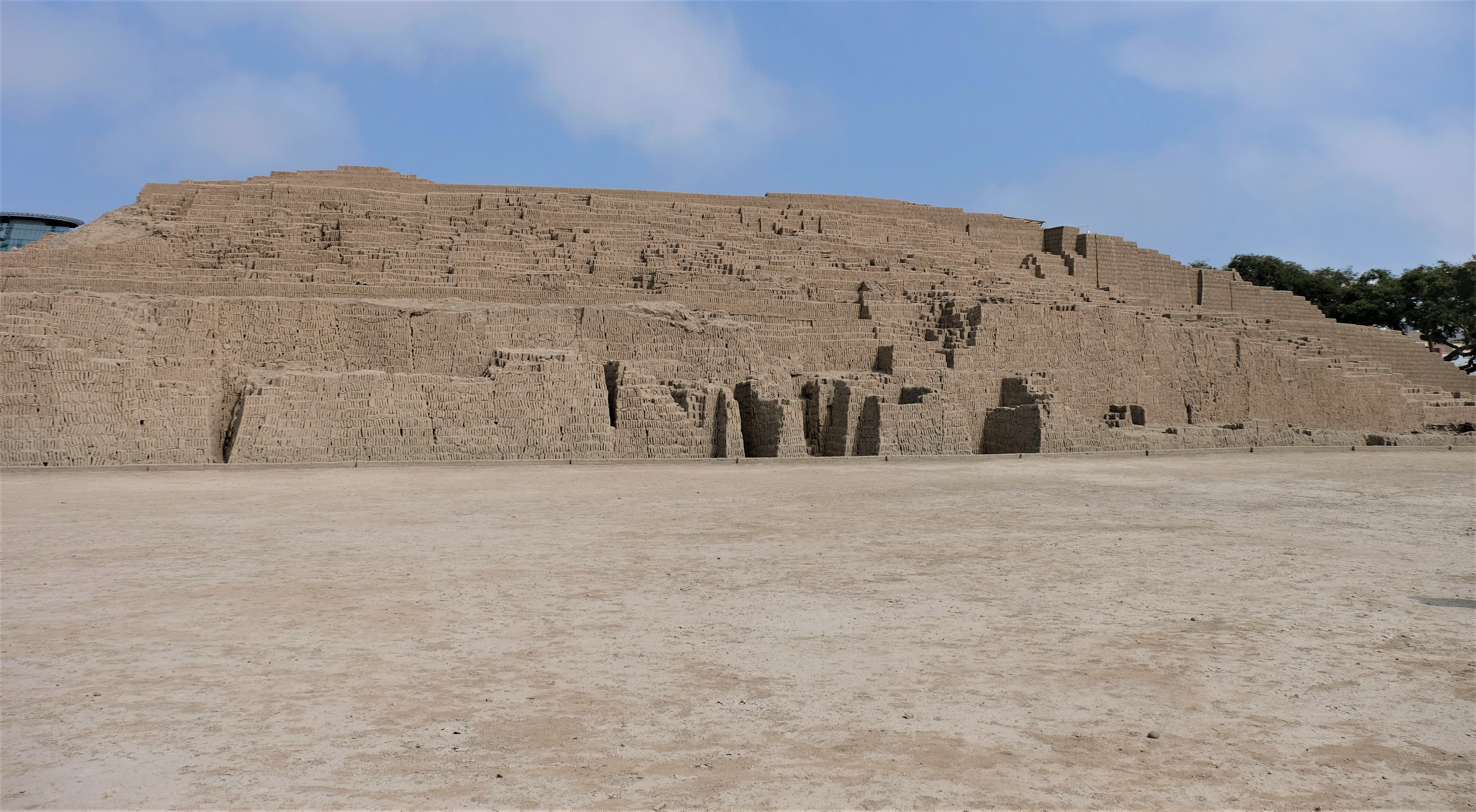
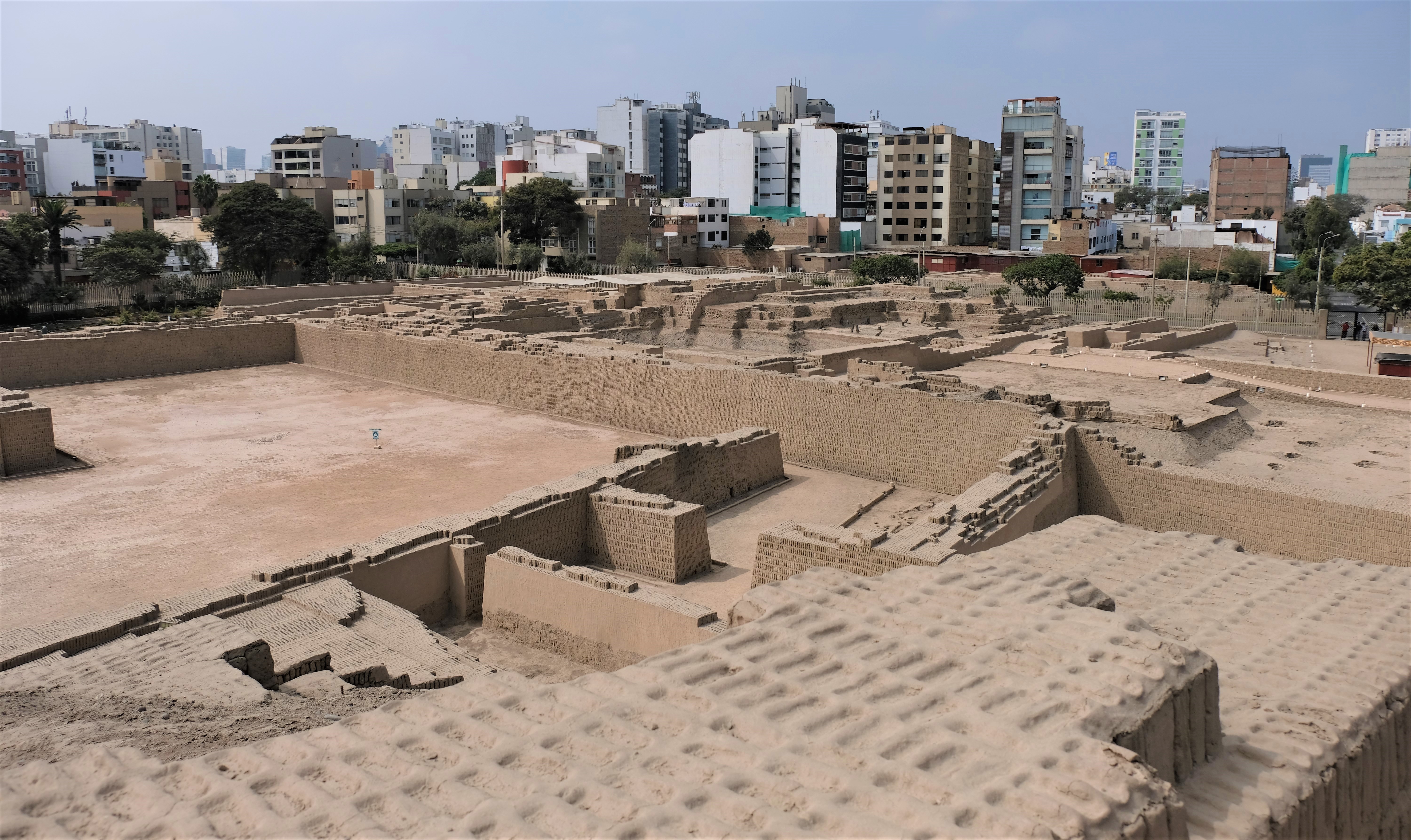
Human sacrifices
Huaca Pucllana may look like a dusty old heap now, yet behind (beneath to be precise) its façade lies a gruesome and bloody past. Both the Lima Culture and Wari Culture used human sacrifice to satiate their god’s needs. During excavation relating to the Lima Culture, many human remains were found. These form part of sacrificial ceremonies. Of the skeletal remains found, most are of young women. These sacrifices seemed to take place at the start, during and ending of a new temple platform. Along with human sacrifices, large intricately decorated vessels were broken, likely during big ritual banquets. At these banquets, seafood seems to be prominent, especially shark.
I’ve already mentioned the how the Wari people used Huaca Pucllana. The deceased was wrapped in many layers of cloth, included within their burials was one or many infants to serve as companions in the afterlife. The most elaborate burial found to date is that of a “Great Priest”. His burial included six costumes decorated with reliefs referring to Pachacama, along with sacrificed children. If that wasn’t macabre enough, he was buried without his head. Probably to be used after his death in ceremonies to invoke his spirit, or something of that nature – no jokes!

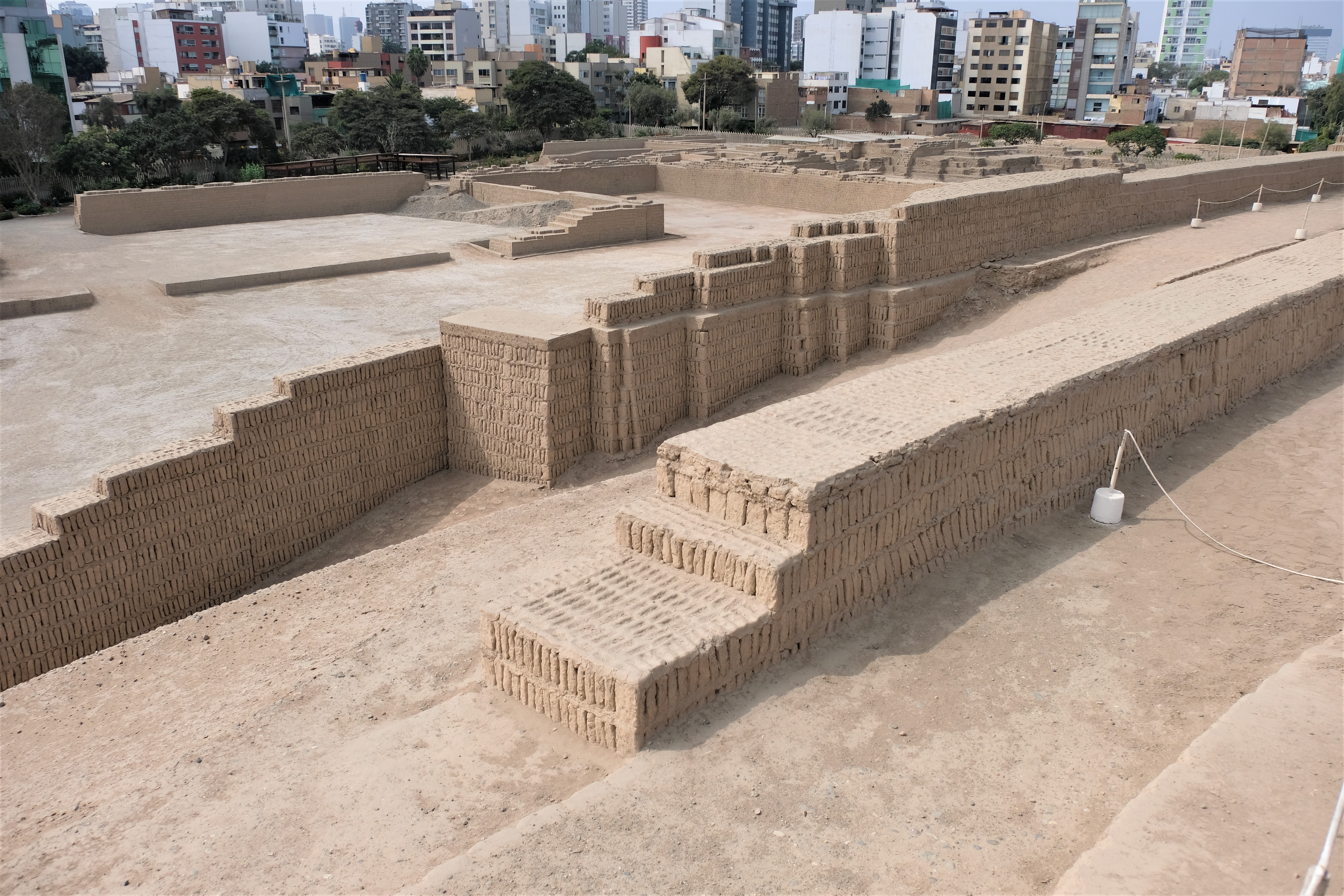
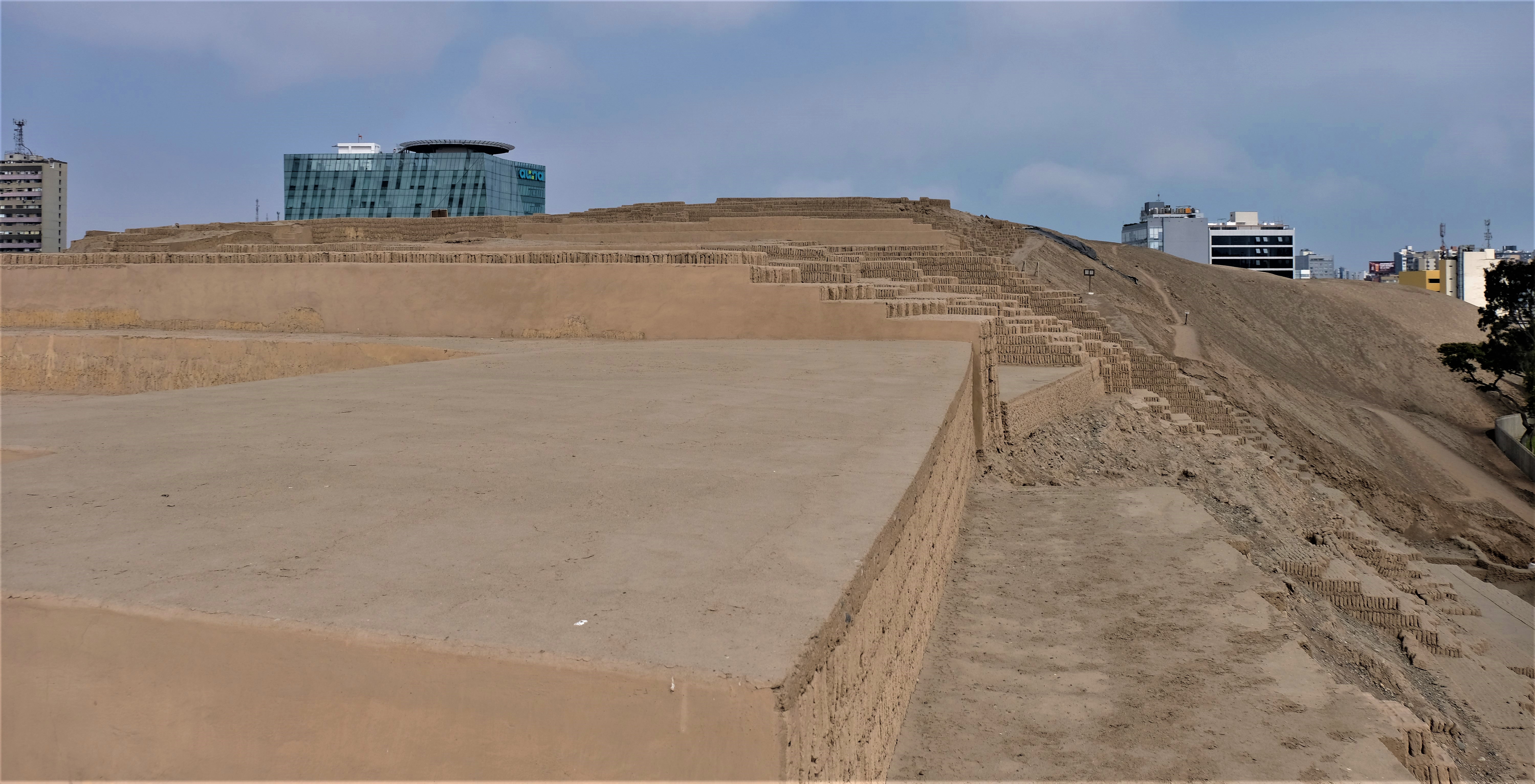
My thoughts on Huaca Pucllana
It’s a huge site, the largest courtyard is 500m long – most of it was built over in the 20th century. I’m glad to see the Peruvian Government has now put a lot of effort into excavating and protecting such a cultural and historically significant site. Entrance to the site is by guided tour, something I took at first to be a bit irritating. That being said, our guide was truly informative and humorous, without shying away from controversial topics like the human sacrifices. He even went so far as to castigate his ancestors for predominantly sacrificing woman. All in all, our tour guide was great; he made sense of the site adding to the experience of visiting Huaca Pucllana.
Ah yes, another reason they insist on guided group tours is to ensure conservation of the site. This aids in preventing idiots damaging the site intentionally or unintentionally. Our guide knew his stuff, and his English was very good too, not to mention his pace of going through the site. Huaca Pucllana was my first taste of ancient/historic South American culture and history. From the dusty adobes a new world of intrigue and excitement ignited inside me for what lay ahead for me in Peru. I don’t know, maybe it’s just me, but I love the fact that an old site like this can go through so much turmoil, especially neglect, and still have so much to tell.
What adds to Huaca Pucllana’s challenge to decipher is the myriad of intertwining passageways. Obviously back in the day these would have made more sense. They linked the administrative buildings to the temple. Some would have been accessible to the general public, others restricted to officials. Others would have been solely for people associated to the temple and maybe the highest of society elite. Just like in many religious sites throughout world and time, there may have been places that only the so called “high priest” would have had access too. One of the things I was most impressed with, other than the sheer size of the temple, is the remains of some of the original wood posts. These would have held up the roofs of the buildings. It’s astonishing they are in situ! What we see today is as close to what the builders saw when they planted them.
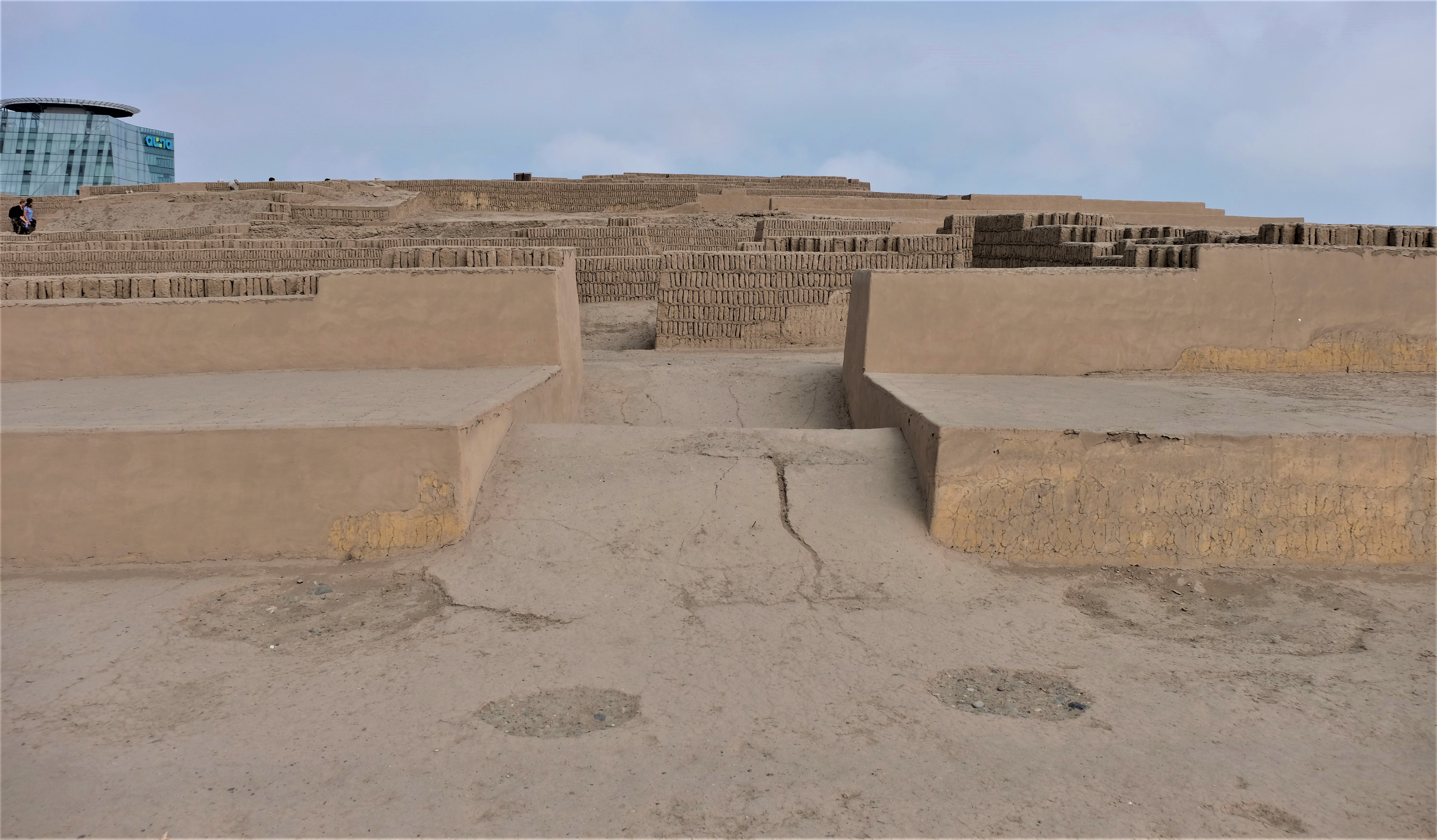

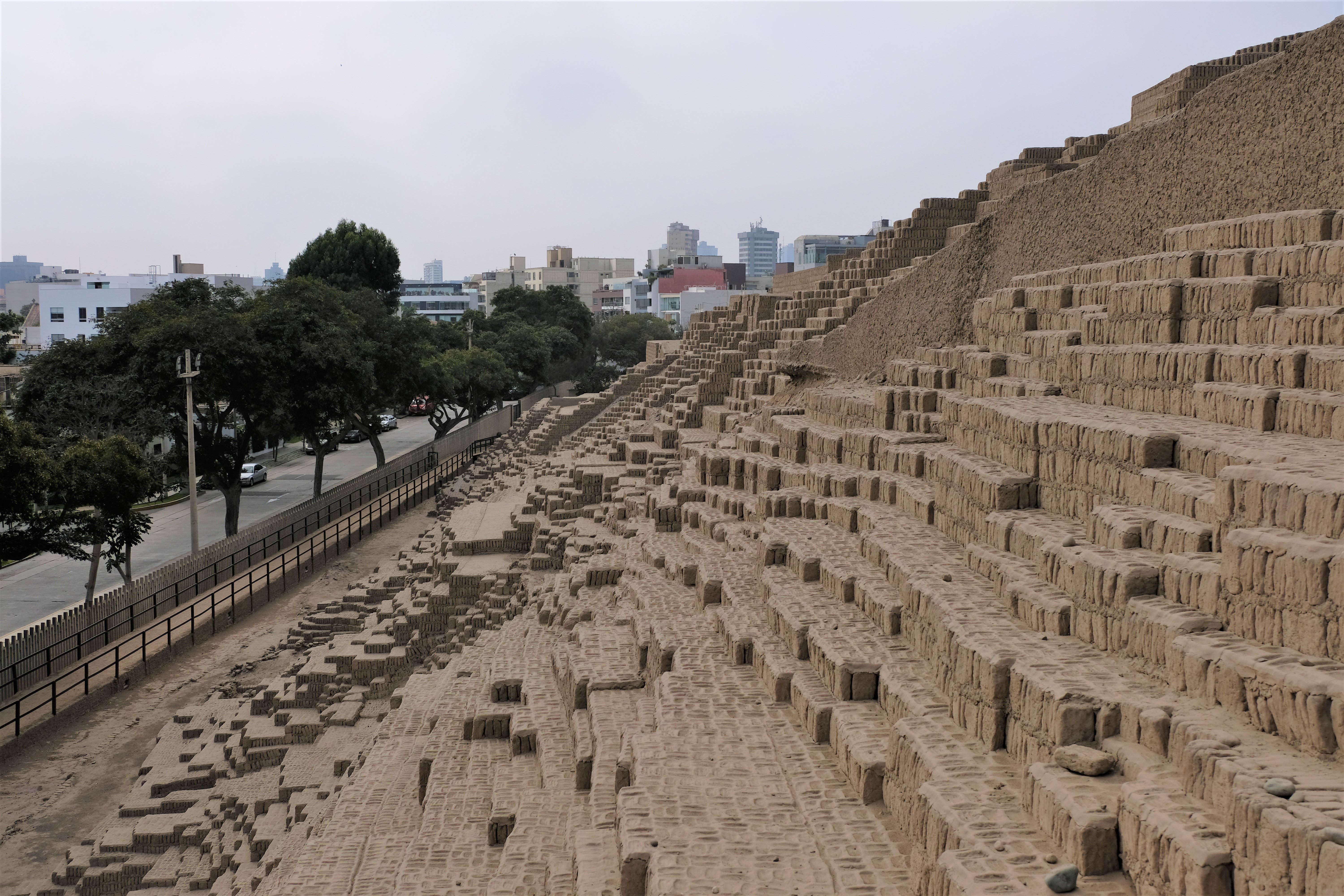
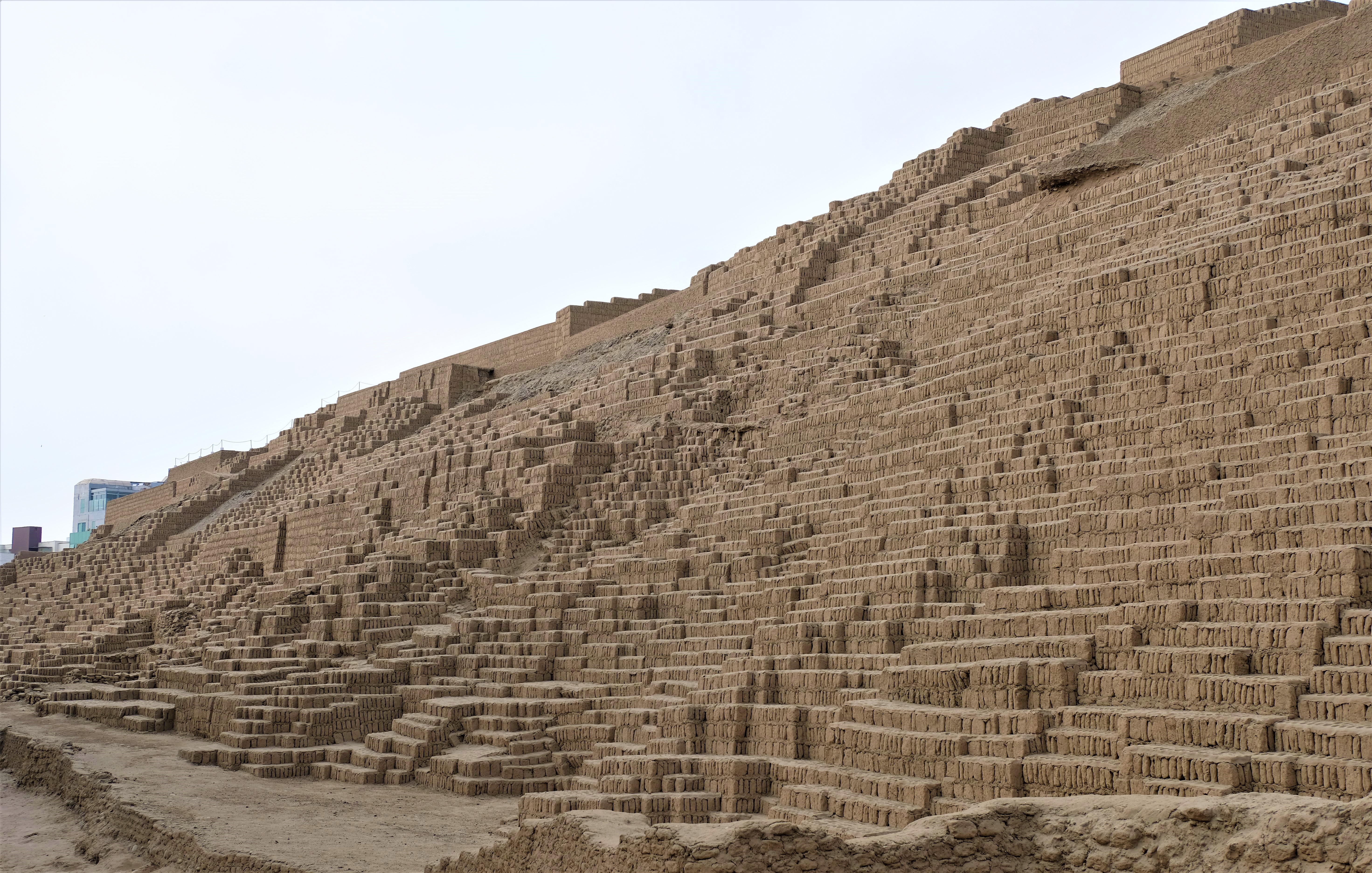
Other intrigues of Huaca Pucllana
Both the Lima and Wari cultures fully appreciated nature, especially the life source of water. The area is close to the sea, a tortuous twist being so close to water that cannot be used – this is a dry and barren region. Little remains of the complex water management system created to sustain the community. In its peak, this region would have sustained a large community meaning agricultural cultivation on a massive scale. Water was a central theme in their rituals and sacrifices; the vessels were painted with water scenes, the food eaten during these rituals was predominantly seafood too. As with so many places throughout the world, they become deserted due to political changes or natural changes, it seems Huaca Pucllana falls into the latter.
To reinforce the diverse use of Huaca Pucllana over the year. Excavations found four Chinese tombs on the side of the temple. This is a reoccurring theme at many huacas/wak’as throughout Peru. No bodies were found in these four tombs, leading archaeologist to believe they were never used. There is no confirmed reason why the Chinese buried their dead in the tombs; the only theory is that their religion differed to the locals – by that time dominated by Catholicism. Since many of the Chinese were agricultural workers, their proximity to the temples may have played a part.
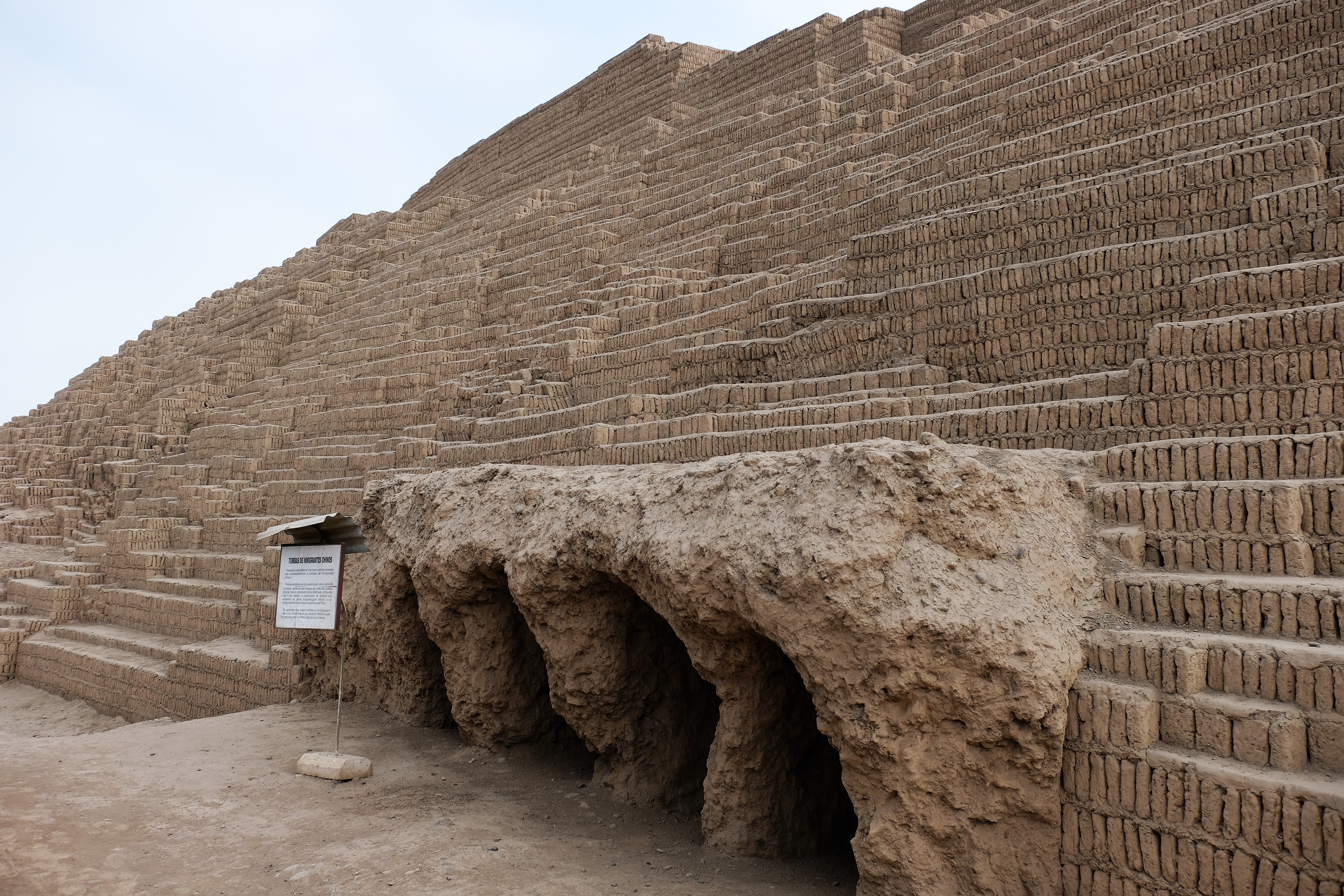

On a downside, little is known about the Lima Culture and others pre their reign. Most people are more interested in their famous neighbours, the Inca. Though, you cannot mistake the similarities of the Lima Culture and that of the Inca, Aztec and Mayan’s. These pre “famous” civilizations like the Lima are the foundations of which great nations were built…yet they don’t get the credit.
Day 2 in Lima I headed into the historic centre of the city – I hope to get that post out soon. Peru started off a tad slow, but was already proving to be as interesting as I thought it would be. If you like I’m always keen to get any feedback on my blog? As always feel free to share the post or my Batnomad Facebook page or photos.
